-
 Bitcoin
Bitcoin $114800
-3.31% -
 Ethereum
Ethereum $3641
-5.84% -
 XRP
XRP $2.948
-6.36% -
 Tether USDt
Tether USDt $0.9998
-0.03% -
 BNB
BNB $772.4
-3.97% -
 Solana
Solana $169.1
-6.68% -
 USDC
USDC $0.9999
-0.01% -
 Dogecoin
Dogecoin $0.2056
-8.09% -
 TRON
TRON $0.3247
-0.18% -
 Cardano
Cardano $0.7239
-7.43% -
 Hyperliquid
Hyperliquid $39.71
-8.60% -
 Stellar
Stellar $0.3912
-7.84% -
 Sui
Sui $3.510
-10.17% -
 Chainlink
Chainlink $16.59
-8.03% -
 Bitcoin Cash
Bitcoin Cash $560.5
-3.65% -
 Hedera
Hedera $0.2464
-10.08% -
 Avalanche
Avalanche $22.03
-7.87% -
 Ethena USDe
Ethena USDe $1.001
-0.02% -
 UNUS SED LEO
UNUS SED LEO $8.947
0.21% -
 Toncoin
Toncoin $3.389
-2.58% -
 Litecoin
Litecoin $104.9
-5.23% -
 Shiba Inu
Shiba Inu $0.00001220
-6.67% -
 Polkadot
Polkadot $3.652
-6.10% -
 Uniswap
Uniswap $9.213
-9.05% -
 Monero
Monero $307.2
-2.93% -
 Dai
Dai $0.9998
-0.02% -
 Bitget Token
Bitget Token $4.367
-2.89% -
 Cronos
Cronos $0.1374
-6.80% -
 Pepe
Pepe $0.00001056
-8.65% -
 Aave
Aave $257.3
-7.31%
How to set up EMA on Binance for crypto?
The Exponential Moving Average (EMA) is a key tool in crypto trading on Binance, offering real-time trend analysis by prioritizing recent price data for faster, more responsive signals.
Jul 30, 2025 at 09:00 pm
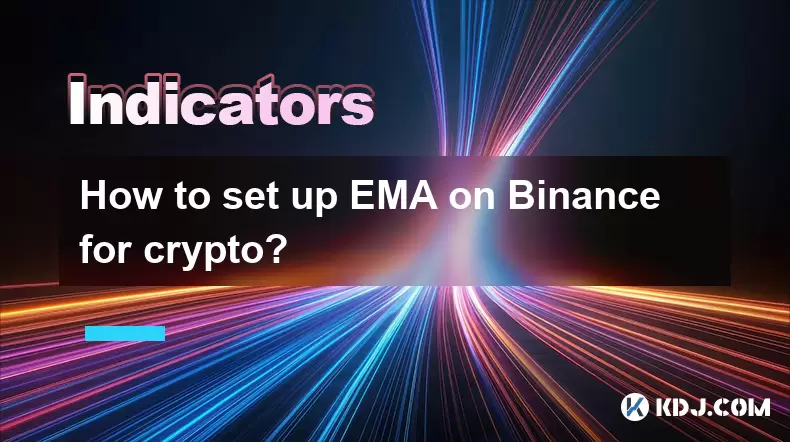
Understanding EMA in the Context of Cryptocurrency Trading
The Exponential Moving Average (EMA) is a widely used technical indicator in the cryptocurrency trading space, particularly on platforms like Binance. Unlike the Simple Moving Average (SMA), which assigns equal weight to all data points, the EMA gives more importance to recent price data, making it more responsive to new information. This responsiveness makes EMA especially useful in the volatile crypto market, where prices can shift rapidly. Traders use EMA to identify trends, potential reversal points, and entry or exit signals. On Binance, EMA can be applied directly on the trading chart through the built-in technical analysis tools, enabling users to customize their trading strategies based on real-time data.
Accessing the Binance Trading Interface
To begin setting up EMA on Binance, you must first access the Binance Spot Trading interface. Log in to your Binance account and navigate to the “Trade” section, then select “Spot.” Choose the cryptocurrency pair you want to analyze—such as BTC/USDT or ETH/BTC. Once the trading chart loads, ensure you are using the advanced chart view for full access to technical indicators. Click on the “Chart” tab if multiple views are available. The chart interface will display price movements over time, along with a toolbar for adding indicators, drawing tools, and timeframes. This is where you will configure the EMA settings.
Adding the EMA Indicator to Your Chart
To add the EMA indicator, locate the “Indicators” button on the chart toolbar—usually represented by the symbol “f(x)” or labeled “Indicators.” Click on it to open a dropdown menu of available technical tools. In the search bar within the indicators panel, type “EMA”. Select the Exponential Moving Average option from the list. Upon selection, the EMA line will automatically appear on your chart, typically in a default color such as blue or red. This line tracks the average price over a specified number of periods, with more emphasis on recent candles.
- Click “Indicators” on the chart toolbar
- Search for “EMA” in the indicator library
- Select “Exponential Moving Average” from the results
- Observe the default EMA line appear on the price chart
Customizing EMA Parameters for Optimal Analysis
After adding the EMA, you can customize its settings to suit your trading strategy. Right-click on the EMA line or click the gear icon next to the indicator name in the indicator panel to open the settings menu. The most important parameter is the period, which determines how many candlesticks are included in the calculation. Common EMA periods used in crypto trading include 9, 12, 26, and 50. Shorter periods like 9 EMA react quickly to price changes, making them suitable for scalping. Longer periods like 50 EMA offer smoother trends, ideal for identifying long-term direction.
- Adjust the “Period” value to your preferred setting
- Change the line color for better visibility (e.g., set 9 EMA to green and 50 EMA to red)
- Modify line thickness to distinguish between multiple EMAs
- Enable alerts if your strategy involves price crossovers with EMA
You can add multiple EMA lines to the same chart. For example, traders often use a dual EMA strategy involving a short-term and a long-term EMA. When the short-term EMA crosses above the long-term EMA, it may signal a bullish trend. Conversely, a cross below could indicate bearish momentum.
Applying EMA Crossover Strategies on Binance
One of the most popular uses of EMA on Binance is the EMA crossover strategy. To implement this, add two EMA lines: one short-term (e.g., 9-period EMA) and one long-term (e.g., 21-period EMA). Watch for points where the shorter EMA crosses the longer one. A bullish crossover occurs when the 9 EMA moves above the 21 EMA, suggesting upward momentum. A bearish crossover happens when the 9 EMA drops below the 21 EMA, indicating potential downward movement.
- Add both 9 EMA and 21 EMA to the chart
- Monitor for visual crossovers between the two lines
- Use candlestick confirmation—wait for the next candle to close in the crossover direction
- Combine with volume indicators to validate the strength of the signal
Some traders also use the EMA ribbon strategy, which involves layering multiple EMAs (e.g., 10, 20, 30, 40, 50, 60) to identify trend strength. When all EMAs align in parallel and the price is above them, it indicates a strong uptrend. When the price falls below the ribbon, it may signal a downtrend.
Saving and Reusing EMA Templates on Binance
Once you’ve configured your preferred EMA setup, you can save it as a template for future use. Click the “Layouts” button on the chart interface, usually located near the top right of the chart area. Select “Save Layout” and give your template a descriptive name, such as “EMA Dual Strategy” or “Crypto Trend Template.” This allows you to apply the same EMA configuration across different trading pairs without reconfiguring each time. You can create multiple templates for different strategies—scalping, swing trading, or long-term investing—and switch between them instantly.
- Click “Layouts” on the chart toolbar
- Choose “Save Layout” from the dropdown
- Enter a unique name for your EMA configuration
- Confirm and save
Later, when analyzing a new coin like SOL/USDT or ADA/BUSD, simply load the saved template to instantly apply your EMA settings.
Frequently Asked Questions
Q: Can I use EMA on Binance mobile app?
Yes, the Binance mobile app supports EMA. Open the trading chart, tap the “Indicators” icon (usually “f(x)”), search for “EMA,” and apply it. Customization options are slightly more limited compared to the desktop version, but core functionality like period adjustment and color change are available.
Q: What is the difference between EMA and SMA on Binance?
The EMA reacts faster to recent price changes because it applies more weight to newer data. The SMA treats all data points equally, resulting in a smoother but slower-moving line. For crypto’s fast-moving market, EMA is often preferred for timely signals.
Q: How do I remove an EMA from my Binance chart?
Click the “Indicators” button, find the EMA listed under active indicators, and click the trash bin icon or “Remove” option next to it. Alternatively, right-click the EMA line on the chart and select “Remove Indicator.”
Q: Can I set price alerts based on EMA crossovers?
Binance does not natively support alerts for EMA crossovers. However, you can set manual price alerts near key EMA levels or use third-party tools like TradingView (linked to Binance via API) to automate such alerts.
Disclaimer:info@kdj.com
The information provided is not trading advice. kdj.com does not assume any responsibility for any investments made based on the information provided in this article. Cryptocurrencies are highly volatile and it is highly recommended that you invest with caution after thorough research!
If you believe that the content used on this website infringes your copyright, please contact us immediately (info@kdj.com) and we will delete it promptly.
- Bitcoin, Ethereum, and Investor Behavior: A New York Minute on Crypto Trends
- 2025-08-01 15:10:12
- Tether's Q2 Triumph: USDT Supply Soars Amidst Profit Surge!
- 2025-08-01 15:10:12
- Ethereum ETF Holdings: A Corporate Treasury Revolution?
- 2025-08-01 15:30:12
- Ethereum's Wild Ride: Funding Rates, Price Drops, and Retail to the Rescue!
- 2025-08-01 15:30:12
- Ethereum Under Pressure: Crypto Market Drop Explained
- 2025-08-01 15:35:11
- Ethereum ETF Mania: Inflows Surge, Market Rises, What's Next?
- 2025-08-01 15:35:11
Related knowledge

What is the difference in KDJ signal interpretation between a trending and a ranging market?
Aug 01,2025 at 03:56pm
Understanding the KDJ Indicator in Cryptocurrency TradingThe KDJ indicator is a momentum oscillator widely used in cryptocurrency trading to identify ...

Does the KDJ indicator work well for low-liquidity crypto assets?
Aug 01,2025 at 02:01pm
Understanding the KDJ Indicator in Cryptocurrency TradingThe KDJ indicator is a momentum oscillator derived from the Stochastic Oscillator, widely use...
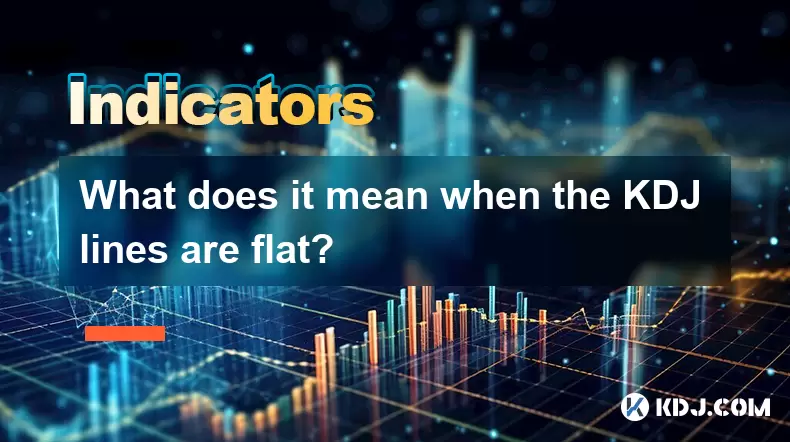
What does it mean when the KDJ lines are flat?
Aug 01,2025 at 03:22pm
Understanding the KDJ Indicator in Cryptocurrency TradingThe KDJ indicator is a momentum oscillator widely used in cryptocurrency technical analysis t...
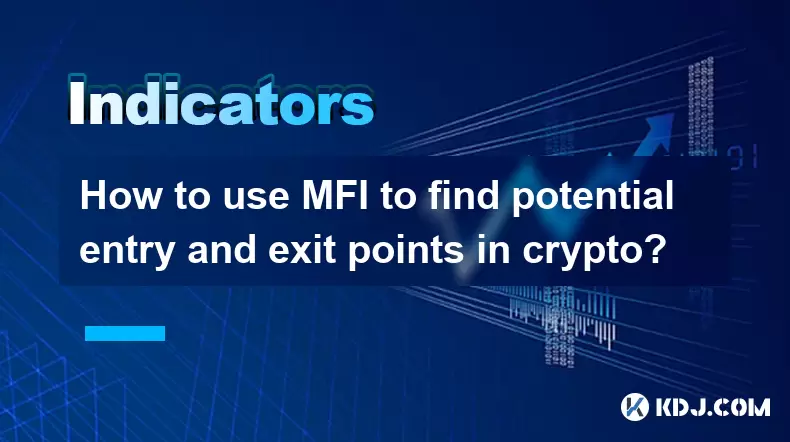
How to use MFI to find potential entry and exit points in crypto?
Aug 01,2025 at 02:35pm
Understanding the MFI Indicator in Cryptocurrency TradingThe Money Flow Index (MFI) is a momentum oscillator used to measure the strength and directio...
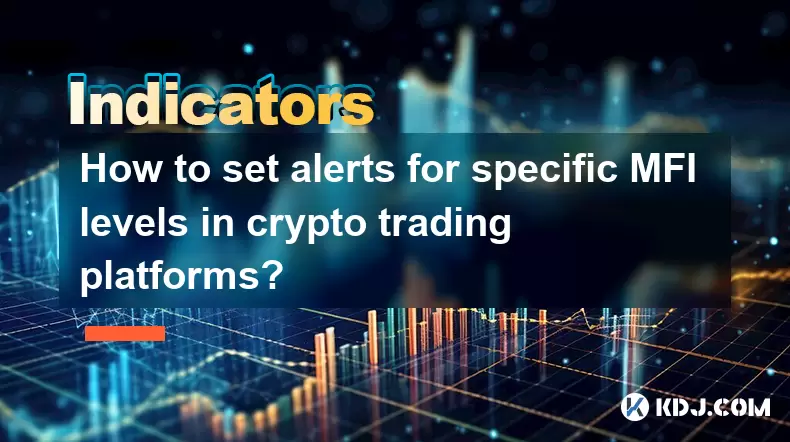
How to set alerts for specific MFI levels in crypto trading platforms?
Aug 01,2025 at 12:42pm
Understanding the Money Flow Index (MFI) in Crypto TradingThe Money Flow Index (MFI) is a momentum oscillator that measures the flow of money into and...
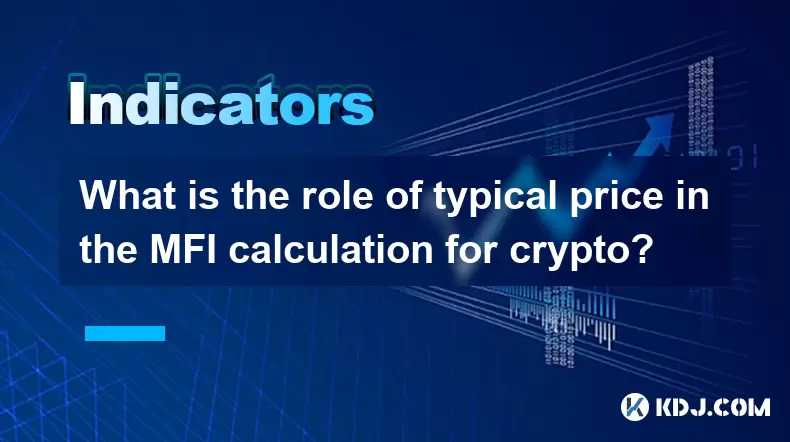
What is the role of typical price in the MFI calculation for crypto?
Aug 01,2025 at 12:21pm
Understanding the Typical Price in MFI for Cryptocurrency AnalysisThe Typical Price plays a crucial role in the calculation of the Money Flow Index (M...

What is the difference in KDJ signal interpretation between a trending and a ranging market?
Aug 01,2025 at 03:56pm
Understanding the KDJ Indicator in Cryptocurrency TradingThe KDJ indicator is a momentum oscillator widely used in cryptocurrency trading to identify ...

Does the KDJ indicator work well for low-liquidity crypto assets?
Aug 01,2025 at 02:01pm
Understanding the KDJ Indicator in Cryptocurrency TradingThe KDJ indicator is a momentum oscillator derived from the Stochastic Oscillator, widely use...

What does it mean when the KDJ lines are flat?
Aug 01,2025 at 03:22pm
Understanding the KDJ Indicator in Cryptocurrency TradingThe KDJ indicator is a momentum oscillator widely used in cryptocurrency technical analysis t...

How to use MFI to find potential entry and exit points in crypto?
Aug 01,2025 at 02:35pm
Understanding the MFI Indicator in Cryptocurrency TradingThe Money Flow Index (MFI) is a momentum oscillator used to measure the strength and directio...

How to set alerts for specific MFI levels in crypto trading platforms?
Aug 01,2025 at 12:42pm
Understanding the Money Flow Index (MFI) in Crypto TradingThe Money Flow Index (MFI) is a momentum oscillator that measures the flow of money into and...

What is the role of typical price in the MFI calculation for crypto?
Aug 01,2025 at 12:21pm
Understanding the Typical Price in MFI for Cryptocurrency AnalysisThe Typical Price plays a crucial role in the calculation of the Money Flow Index (M...
See all articles

























































































